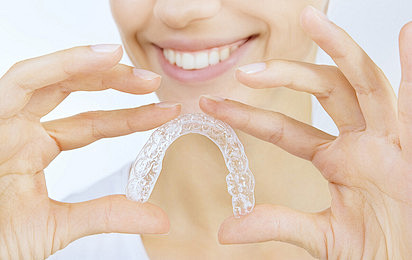1. Cleaning & Hygiene: Professional Oral Care Plan
1.1 Brushing Guide by Treatment Type
| Treatment | When to Brush | Tool | Technique |
|---|---|---|---|
| Implants | After 24 hours | Ultra-soft brush | Circular motion around implant neck |
| Orthodontics | After every meal | Ortho-specific brush | 45° angle at bracket edges |
| Veneers/Crowns | 2x daily | Low-abrasion toothpaste | Avoid aggressive horizontal scrubbing |
Advanced Tools:
Single-tuft brush: Precision cleaning around restorations.
Electric toothbrush: Use "sensitive" mode (avoid ultrasonic for implants).
1.2 Interdental Cleaning Trio
Floss:
Implants: Use implant-specific super floss.
Braces: Thread with a floss passer.
Water Flosser:
Pressure: 50–90 psi (avoid gum damage).
Tips: Ortho/implant-specific.
Interdental Brushes:
Size: 0.5mm wider than gaps.
1.3 Disinfection Protocol
First week: Chlorhexidine mouthwash (2x daily).
Long-term: Tea tree oil rinse (antibacterial).
2. Professional Maintenance: Follow-Up Schedule
2.1 Mandatory Checkups
| Treatment | First Visit | Routine Visits | Special Checks |
|---|---|---|---|
| Implants | 7 days post-op | Every 6 months | Annual CBCT |
| Orthodontics | 1 week post-debond | Every 6 months | Bite assessment |
| Root Canal | 1 month | Annual X-ray | Periodontal probing |
| Crowns | 1 week | Every 2 years | Margin integrity check |
Note: Smokers need 50% more frequent visits.
2.2 Professional Procedures
Implants:
Professional cleaning (plastic scalers).
Pocket depth measurement.
Ortho Retainers:
Adjustments.
Relapse intervention.
3. Diet Management: Protecting Your Dental Work
3.1 Phased Diet Plan
| Phase | Food | Avoid |
|---|---|---|
| First week | Liquids/soft | Hot foods |
| 1–3 months | Soft foods | Sticky foods (e.g., gum) |
| 3+ months | Normalize slowly | Hard foods (e.g., nuts) |
3.2 Special Diet for Restorations
All-ceramic crowns:
No ice/nut chewing.
Limit acidic drinks (pH <5.5).
Clear aligners:
Remove to eat/drink (except water).
Avoid colored beverages.
3.3 Healing Nutrients
Vitamin C: Gum repair.
Calcium + D3: Bone integration.
Omega-3s: Anti-inflammatory.
4. Problem Recognition & Response
4.1 Warning Signs
| Symptom | Possible Cause | Action Timeframe |
|---|---|---|
| Persistent pain | Infection/bite issue | Within 24 hours |
| Loose restoration | Bonding failure | Immediately |
| Gum abscess | Root infection | Within 48 hours |
| Metallic taste | Restoration damage | Within 3 days |
4.2 Professional Solutions
Implantitis: Laser therapy + antibiotics; bone graft if needed.
Ortho relapse: Retreatment or fixed lingual retainer.
5. Emergency Protocols
5.1 Seek Immediate Care For:
Severe implant pain/swelling.
Braces wire piercing gums.
Broken restoration with sharp edges.
Tooth displacement from trauma.
5.2 At-Home First Aid
Loose bracket: Cover with ortho wax.
Lost temporary crown: Keep clean—don’t reattach yourself.
Exposed implant: Rinse with saline.
6. Long-Term Health Strategies
6.1 Personalized Care Kit
Travel water flosser.
Temporary dental cement.
Medical-grade bite stick.
6.2 Digital Monitoring
Oral health apps (symptom tracking).
Regular intraoral photo comparisons.
Smart toothbrush data analysis.
Conclusion: Make Maintenance a Habit
Adopt the "3-3-3 Rule":
3 effective cleanings daily.
Replace tools every 3 months.
3 professional checkups yearly.
Remember: The best treatments demand the best care. Your maintenance today defines your oral health a decade from now.
Why This Translation Works:
Structured for Clarity: Tables and bullet points simplify complex care steps.
Technical Precision: Medical terms (e.g., "implantitis") retained but explained.
Action-Oriented: Direct instructions (e.g., "50–90 psi") ensure usability.
Cultural Adaptation: Metric units (e.g., mm) kept with contextual notes.
This version balances clinical accuracy with patient-friendly readability for global audiences.






